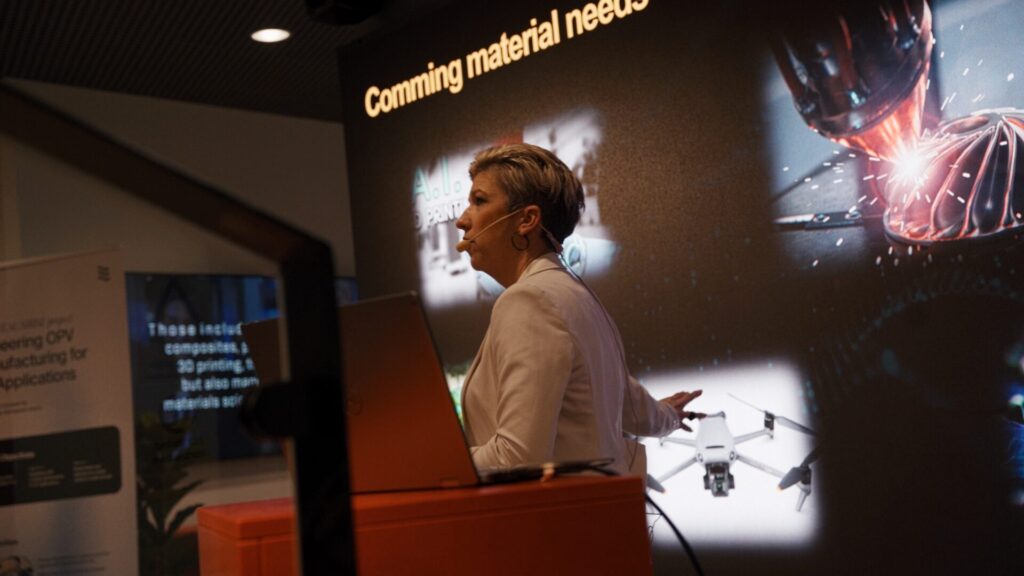
A huge thank you to everyone who joined SIO Grafen and Innovative Materials Arena for Advanced Materials Unite – a day that once again highlighted how the future is being partly shaped by advanced materials. From space technology to sustainable plastics, from cutting-edge research to the needs of the defense industry, we were reminded of the power of collaboration across sectors.
The energy and interest in building connections across technologies, disciplines, and perspectives was evident throughout the day, a clear sign that materials innovation truly moves forward together. In addition to the talks and presentations, attendees also had the opportunity to visit the facilities of Faurecia Creo and Swegan, both located at IMA One. These visits were met with great interest and sparked many insightful questions, adding a hands-on dimension to the day and highlighting the real-world settings where advanced materials are developed and tested.
Industry on the Move
The program itself offered a tapestry of intersecting themes that revealed parts of the broader story of material innovation today. One such thread was the role of major institutions and industry in accelerating progress. Emma Bergmar from Beyond Gravity shared how their space mission separation systems are evolving, while reflecting on a broader shift in the space sector from public to private.
Magnus Berggren presented WISE, one of Sweden’s largest initiatives in materials science, using examples like the plastic bag and the transistor to show how previous technological leaps can inspire the green transition, and how quick they can be. He noted that while countries like Greece and the Netherlands are currently ahead, Sweden has the potential to regain momentum. Saab also shared how defense sector needs are driving material innovation – from lightweight composites for drones to adaptive textiles – and why partnerships with smaller actors and academic institutions are crucial to meet demands for scalability and speed.
Frontline Research in 2D Materials and Funding
A second thread focused on research and scientific discovery. Johanna Rosén from Linköping University took us into the world of 2D materials beyond graphene. She highlighted MXenes and the power of combining AI and simulations to screen over 90 materials in their search for new properties and functionalities. “We make pasta – spaghetti and tagliatelle,” she playfully said, describing the variety of structures in a way that made even the densest science feel tangible.
The third core theme revolved around funding and scaling deep tech. Catharina Sandberg from the Diana Accelerator discussed the growing interface between civil and military innovation, and how startups can compete for DIANA funding through formal application processes. Julia Hellström from Vinnova highlighted the EIC Accelerator and its support for high-risk, high-potential startups in the EU. With only 6% of applications funded, competition is stiff. “Start your application yesterday”, Julia urged.
From Lab to Market – SME Voices
Finally, the voice of SMEs brought the day full circle. The showcase featured companies Bright Day Graphene, Graphmatech, Glenntex, Grafren, VBN Components & Epishine. They offered reflections on commercialization, customer focus, and navigating the cultural divide between small and large players. One speaker captured an insight perfectly: “Stop loving your research – think about your customer.”
Thank You!
Advanced Materials Unite painted a clear picture: innovation in materials doesn’t happen in isolation. Real progress takes shape when research, industry needs, and funding come together. From universities to corporates and startups, the day highlighted how collaboration is the key to unlocking the full potential of advanced materials. Thank you to everyone who joined the conversation – on stage, during the facility tours, and in the many spontaneous meetings throughout the day. We hope to have you all back soon.
Written by Andreas Johansson, Head of Communications at IMA
